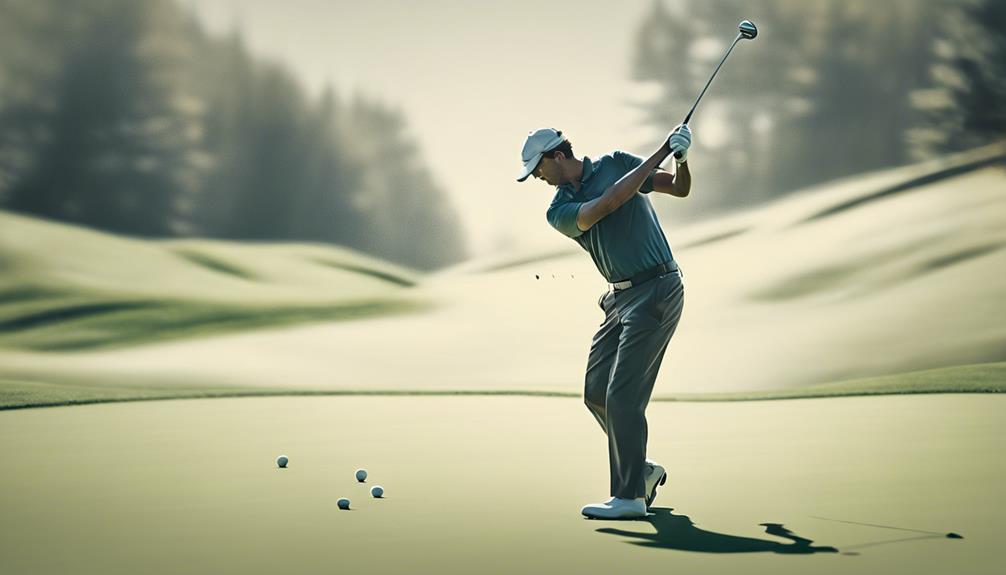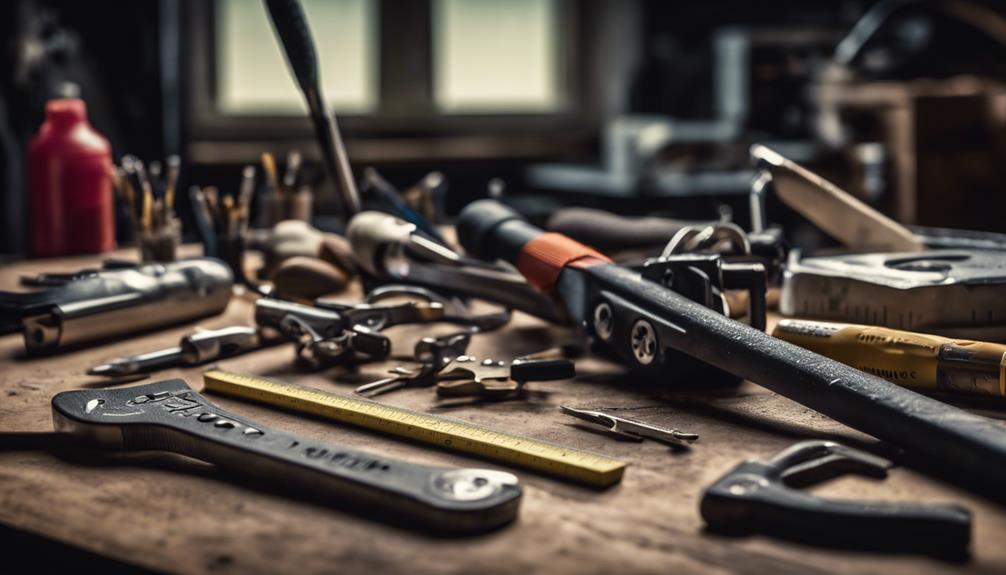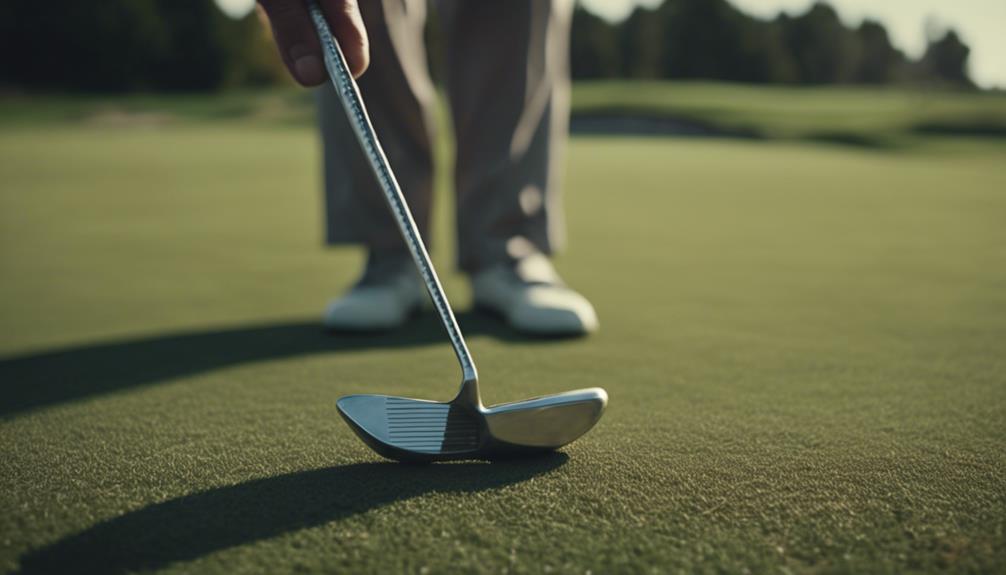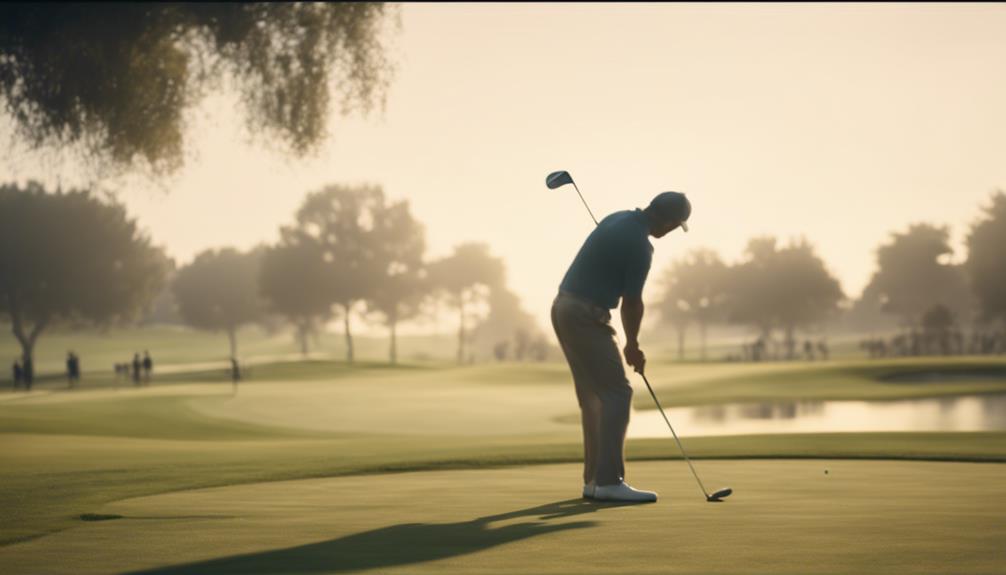- 7 Top Flite Golf Clubs XL for Improved Performance - September 28, 2024
- Top Flite Golf Clubs: Top 5 Reasons to Choose Them - September 28, 2024
- Top 3 Golf Club Fitters for a Perfect Swing - September 28, 2024
You're about to gain a game-changing advantage on the course by lengthening your golf clubs by 1 inch, a strategic move that can substantially boost your driving distance and overall performance. To get started, assess your current swing dynamics, choosing the right shaft extenders to complement your clubhead speed, ball speed, and spin rate. Prepare your clubs for extension, considering shaft type and required adapters. Then, extend your graphite and steel shafts correctly, taking care to maintain stability and performance. Adjust the lie and loft for proper fitting, and practice with your extended clubs to facilitate a smooth adaptation. As you master these steps, you'll be poised to tap into even greater improvements.
Key Takeaways
- Assess current swing dynamics to establish a baseline for future comparisons and choose the right shaft extenders accordingly.
- Extend graphite shafts correctly, ensuring precise alignment of the shaft's spine to maintain stability and performance.
- Adjust lie and loft for proper fitting, as a 1-inch extension can alter the lie by 1-2 degrees and affect loft characteristics.
- Practice with extended clubs successfully by focusing on achieving a proper fit adjustment tailored to your unique swing style.
- Optimize your swing technique by maintaining optimal weight distribution, smooth transition, and shallow divot patterns to get the most out of your extended clubs.
Assess Your Current Swing Dynamics

You need to gather data on your current swing dynamics, including clubhead speed, ball speed, launch angle, and spin rate, to establish a baseline for future comparisons.
This information will serve as a reference point to measure the effectiveness of extending your golf clubs.
To collect this data, consider using a launch monitor or working with a golf instructor who's access to such technology.
They can help you analyze your swing and provide accurate readings.
When you play golf, your swing dynamics are vital to achieving the best possible results.
Understanding your current clubhead speed, ball speed, launch angle, and spin rate will help you identify areas for improvement.
Steel extensions can alter these dynamics, so having a clear understanding of your baseline numbers is imperative.
By establishing a solid foundation, you'll be able to make informed decisions about extending your clubs and maximize your performance on the course.
Take the time to gather this critical data, and you'll be well on your way to taking your game to the next level.
Choose the Right Shaft Extenders
With your baseline swing dynamics established, selecting shaft extenders that complement your clubhead speed, ball speed, and spin rate to achieve ideal performance is vital.
You'll want to take into account extenders that match your existing shaft's weight, flex, and torque profile to maintain consistency.
When choosing extenders, you'll need to decide between steel and graphite options.
If you're looking to extend steel shafts, look for extenders with a similar outside diameter to secure a smooth connection.
Graphite shaft extenders, on the other hand, often require a specialized adapter to provide a secure bond.
It's vital to select extenders designed for your specific shaft type, as mismatched extenders can lead to inconsistent performance and even damage to your clubs.
Be sure to research and choose reputable manufacturers that provide high-quality extenders tailored to your specific needs.
Prepare Your Clubs for Extension

Proper preparation of your clubs is essential before extending them, as it directly impacts the outcome and longevity of the extended shaft.
To guarantee a successful extension, you'll need to prepare your golf clubs accordingly. For graphite shafts, make sure you're not extending more than 2° to avoid premature failure due to stress. For steel shafts, use steel extenders and epoxy, and abrade the extension pieces prior to installation to facilitate a strong bond.
When preparing your clubs, consider reusing old graphite or steel shafts as extenders to save money and provide a suitable extender. However, implement proper installation to avoid compromising the shaft's integrity.
Keep in mind that extending shafts makes them feel more flexible and increases swingweight by 3 points per ½ inch, while the club's balance point moves towards the grip end due to the longer length.
Before you begin, take a step back and think about the benefits of extending your irons, such as helping taller golfers get down to the ball and avoid hitting it thin.
Consider alternative methods like soft-stepping all shafts or using aluminum or plastic extensions.
Extend Your Graphite Shafts Correctly
Extending graphite shafts requires meticulous attention to detail, as even slight misalignments can compromise the shaft's integrity and lead to premature failure.
When extending your graphite shafts, you'll need to confirm precise alignment of the shaft's spine, a critical factor in maintaining the shaft's stability and performance.
To achieve this, use a high-quality shaft extension tool specifically designed for graphite shafts, and follow the manufacturer's instructions carefully.
As you extend the shaft, pay close attention to the shaft's orientation, verifying it remains perfectly straight and true.
Any deviation can result in uneven stress distribution, leading to shaft failure or inconsistent performance on the course.
Take your time, and work methodically to avoid introducing any twists or bends during the extension process.
Remember, a marginally extended graphite shaft can still deliver exceptional results, but a poorly extended one can lead to disaster.
Extend Your Steel Shafts With Care

You'll need to exercise equal caution when extending your steel shafts, as the process requires a distinct set of considerations to guarantee a strong and durable connection.
Unlike graphite shafts, steel shafts demand a more precise approach to secure a reliable upgrade.
When extending your steel shafts, using steel extenders is vital to avoid breakage, as other materials may not provide a strong enough bond.
Relying on pressure fits can lead to a weak connection, so make sure to securely bond the extensions.
Abrade extension pieces prior to installation: This facilitates a strong epoxy hold, especially for unplated steel extensions.
Select the right material for extension: Reusing old steel shafts as extenders can be a cost-effective and suitable option, providing a stronger fit compared to other materials.
Adjust Lie and Loft for Proper Fitting
As you lengthen your golf clubs, precise adjustments to the lie angle and loft become essential to maintaining a consistent swing and peak performance.
A 1-inch extension can alter the club's lie by 1-2 degrees, making it vital to reassess the lie angle to guarantee proper fitting. Failure to do so can result in inconsistent ball striking and poor shot dispersion.
Loft adjustments may also be necessary, as extending the club can increase the effective loft, affecting the club's trajectory and distance. A general rule of thumb is to decrease the loft by 0.5-1 degree for every 1-inch extension to maintain the club's original characteristics.
It's recommended that you consult with a professional club fitter or undergo a thorough fitting session to determine the ideal lie and loft adjustments for your extended golf clubs. By making these precise adjustments, you'll be able to maintain a consistent swing and peak performance, even with your newly extended clubs.
Practice With Extended Clubs Successfully

Now that you've adjusted the lie and loft of your extended clubs, it's time to practice with them successfully.
You'll need to focus on achieving a proper fit adjustment, ensuring your clubs are tailored to your unique swing style.
Proper Fit Adjustment
Practicing with extended clubs requires precise adjustments to facilitate a seamless shift, and making these adjustments begins with evaluating your stance and posture. As you stand over the ball, pay attention to how the extended clubhead affects your overall alignment and balance. You may need to adjust your weight distribution or ball position to maintain a consistent swing plane.
To guarantee a proper fit, consider the following key factors:
- Lie Angle: Verify that the club's lie angle is still suitable for your swing, as extending the club may alter its natural position at address.
- Grip Size: If you've added length to your clubs, you may need to adjust your grip size to maintain a comfortable hold and prevent twisting or slipping during the swing.
- Shaft Flex: Reassess the shaft flex to confirm it still matches your swing speed and tempo, as the added length may affect the club's overall flex profile.
Optimal Swing Technique
With your extended clubs properly fitted, you're ready to refine your swing technique to take full advantage of the added length.
To optimize your swing, focus on maintaining a consistent posture and ball position. As you address the ball, make certain your weight is evenly distributed between both feet, with a slight bias towards your lead foot. This will help you generate more power and stability throughout your swing.
As you swing, prioritize a smooth shift from backswing to downswing, avoiding any abrupt changes in tempo or direction. This will help you maintain a consistent swing plane and strike the ball more consistently.
When practicing on the best golf course, pay attention to your divot patterns and adjust your swing accordingly. Aim to create a shallow divot, indicating a slightly descending blow.
Frequently Asked Questions
Can You Lengthen Graphite Shafts?
You can lengthen graphite shafts, but it's vital to maintain shaft integrity; carefully applying resin to the extended area guarantees a strong bond, preserving the shaft's original performance characteristics and preventing damage.
How Do You Size Golf Clubs for Your Height?
You determine proper fitting by considering your height and body type, ensuring the club's lie and length align with your swing plane, allowing for ideal ball striking and consistent performance.
How to Extend Junior Golf Clubs?
Did you know 75% of junior golfers use ill-fitting clubs? You're wise to extend junior golf clubs for ideal youth development. Proper club selection is essential; measure the junior's wrist-to-floor distance to determine the correct length, ensuring a solid swing foundation.
How to Measure for Golf Club Extensions?
When measuring for golf club extensions, you'll need to factor in club fitting and swing analysis to determine the ideal length. Start by measuring the current club length from heel to grip, then add your desired extension, ensuring it doesn't exceed the 2-inch limit.
Conclusion
Fine-tune your fundamentals, flex your fitted frames, and fix your focus.
With these 7 steps, you've successfully stretched your sticks, swapping sacrifices for sweet spot supremacy.
Now, precision and power propel you to pinpoint performance, and your prolonged putters and drivers deliver dominating drives.




